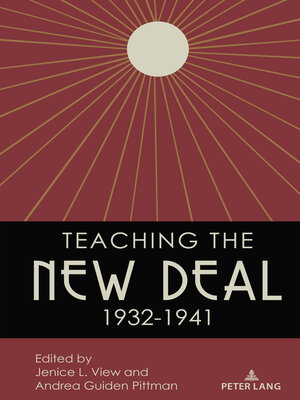Teaching the New Deal, 1932-1941
ebook ∣ Teaching Critical Themes In American History
By James Mitchell

Sign up to save your library
With an OverDrive account, you can save your favorite libraries for at-a-glance information about availability. Find out more about OverDrive accounts.
Find this title in Libby, the library reading app by OverDrive.



Search for a digital library with this title
Title found at these libraries:
| Loading... |
This volume provides pre-service teachers, in-service teachers, social studies methods teachers, and college level social studies content faculty a variety of resources for teaching and learning about the New Deal Era. Written with teachers in mind, each chapter introduces content that both addresses and disrupts master narratives concerning the historical significance of the New Deal era, while offering a creative pedagogical approach to reconciling instructional challenges. The book offers teachers a variety of ways to engage middle and high school students in economic and political arguments about American capitalism and the role of the federal government in defining and sustaining capitalism, as sparked by President Franklin Delano Roosevelt's New Deal policies. Among the significant actors in the chapters are women, Indigenous/Native, African-descended, Latinx, Asian Pacific Island, and LGBTQ+ people. The New Deal generation included farmers, sharecroppers, industrial workers, and homemakers who were more willing than ever to question the capitalists and politicians in official leadership, and also willing to demand an economy and government that served the working and middle classes, as well as the wealthy. Roosevelt's New Deal offered such a promise. For some, he was considered a class traitor who went too far. To others, he was considered a coward who did not go far enough. The legacies of the New Deal inform much of the public debate of the early 21st century and are, therefore, relevant for classroom examination.






